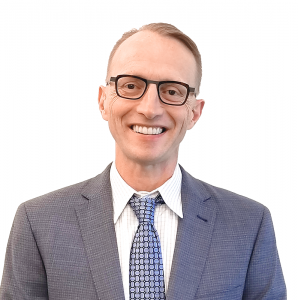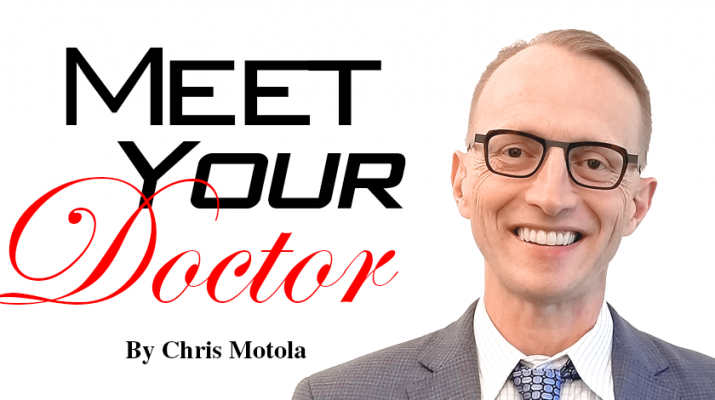Chief medical officer at General Physician — describing himself as the Energizer bunny — talks about electronic medical records, how his group is advancing community’s health, and how he juggles administrative and clinical duties
By Chris Motola
 Q: Can you give a rundown of what General Physician, PC is?
Q: Can you give a rundown of what General Physician, PC is?
A: General Physician is an employed group of physicians with Great Lakes Health, which includes Buffalo General and ECMC. We have some association with the University at Buffalo. We are in most of the eight counties of Western New York with a special emphasis in cardiology and primary care. We also have gynecology, orthopedics, oncology, pulmonology and we’re expanding rapidly into our subspecialities. So we’ve had a tremendous period of growth since I took over as chief medical officer in June 2015. I think the idea of an employed group of physicians that is in place to support outpatient initiatives of the Great Lakes Health System and what’s in the best interests of the community’s health. What you see with our organization is a group of docs and administrators who are about achieving goals that advance the community’s health. We’re physician-led but patient-centered.
Q: You’ve played a role in how your group handles electronic medical records (EMRs). What changes have you made?
A: When I started, we had one electronic platform which we spent a great deal of time optimizing for our docs. It’s now become the goal of the system to have one electronic platform across as much of the community as possible, so across Great Lakes, across UBMD, Kaleida. So if you come into one of my offices and then go to Buffalo General, they’re able to get your information seamlessly. So we’re an integral part of that process. I’ve been reviewing the new EMR for over a year. I think it’s in the community’s interest to have one platform. It improves the patient experience and avoids duplication of services, so it’s just a very exciting thing for the community.
Q: Is this being spurred by the state’s move toward health homes?
A: Our organization and all of our locations are certified patient-centered medical homes. This is kind of a different thing, but it will make this process easier. Another office that uses a separate EMR and wants that patient’s weight will have a delay. I may not know in real time what’s going on. Honestly, what we’re working on now is what I thought EMRs were going to be when they were put in place 20 years ago. We have 28, 29 platforms in our community. And even the one we have, there are versions of it that don’t communicate. We’re doing all this electronic stuff and none of it communicates. To think that we’re going to have one platform for as many offices as want to participate is just a very exciting thing to me.
Q: I imagine this fragmentation leads to a lot of duplication of services.
A: There’s no question. Think about how helpful it is, say, for your eye doctor to have all your labs, your consults available. It’s just an exciting opportunity to improve your overall health.
Q: I understand that the trend is for new physicians to join group practices like yours. What would be your sales pitch to those doctors?
A: I think there are a couple unique things we have. The EMR is one of them, but I think it’s also just leadership. If you look at the Great Lakes Health leadership, you see a group of leaders who are committed to doing the right thing for the community. I think we take a lot of business backend off, the business end of things. We’re here to support the docs. There’s just more ability to do things when you’re supported by a hospital system. We’re providing services for practices. So you can make a real difference and focus on patient care when you’re not worried about the backend.
Q: What got you interested in an administrative role?
A: I think it was the Great Lakes leadership. These are guys who just seem like they’re trying to do the best for their community, trying to bring a clinically integrated network, which is GLIN (Great Lakes Integrated Network) where you have this shared common EMR. You have a collaboration between health care systems and university involvement, you have a great unified approach to managing patient care. So it’s a very exciting opportunity to be a part of that, as a provider who has been practicing 20 years. It’s really cool.
Q: Were you with the General Physicians from the start?
A: No, interestingly the company was started on the small end with a couple practices. It was a way for Kaleida to support some remote practices that needed some help. And the decision was made to really move into this venue as an integrated network. So it’s kind of been an evolution. We’ve just hit a critical mass where we can really make a difference.
Q: Do you see this as a model for other communities across New York?
A: So if you look at Rochester, Cleveland, Pittsburgh, the model has moved into this employed model, where the hospital systems support the major practices. But now as a major practice, we’re able to go into the outlying communities and support practices there. We pushed cardiologists down into Bradford. We’re getting engaged with Dunkirk and eastern Niagara. We’re just a small piece of the outpatient support system.
Q: How are you dividing your time between administration and practice?
A: It’s not so much dividing. I love practicing, so I practice all day, every day. I’m kind of like the Energizer bunny. When I get done talking to you, I’ll be doing other phone calls. I’ve been going since about 4 o’ clock this morning.
Q: You must! You’ve got a big family too. My understanding is that you have five children.
A: I enjoy being a dad as well. I dropped my son off at 5 o’clock this morning to go summer camp up in the Adirondacks. My family is my hobby, as my wife would say. I feel really blessed.
Lifelines
Name: Richard Charles, M.D.
Position: Chief medical officer at General Physician PC. Also serves as chief medical informatics officer and chief quality officer, as well as a full-time practicing board-certified internal medicine physician
Hometown: Akron, NY
Education: University at Buffalo (School of Medicine and School of Pharmacies)
Affiliations: Great Lake Health
Organizations: Erie County Medical Society
Family: Married, three children, two stepchildren
Hobbies: Investing in his nephew’s ice cream store

